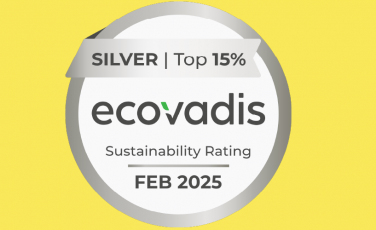Numbers with different sizes, percentages, estimates, probabilities… A set of figures presented in the form of raw tables and removed from their context is often not enough to make the message you want to convey to your interlocutors intelligible.
So how do you get there? There is a way to do this that has been gaining popularity for a few years now: data storytelling.
More than a method in its own right, data storytelling brings together a set of techniques, based on the foundations of storytelling, which is widely used in marketing and communication, and data visualization, to present figures with clear, uncluttered graphics that everyone can understand.
These techniques aim to make the numbers intelligible for decision making.
Several points are important:
- Define the context well. It is important to synthesize your ideas to indicate what is at stake: am I able to present in a few sentences and a few moments my context and the message I wish to convey to my interlocutors? If the answer is no, you need to rework your objective, clarify your ideas to make them accessible to people who potentially have no idea of the subject you are going to present. Therefore, at the beginning of this process, it is important to answer the questions of who/what/how:
Who = who is my audience?
What = what is expected of this audience?
The audience can be reached either orally, where you have a good command of what you say and what the audience receives, without going into unnecessary detail, or in writing, where you have less control over what the audience receives and how it processes the information, with a greater need for explanations and details.
How = what data will be necessary to reach your objective?
- Choose your visual: at this stage, avoid overloading the figures by inserting them in visuals that are complicated to read and interpret. Don’t forget that in this area, the best is the enemy of the good! Readability is always a priority: don’t mix several ideas in the same visual, in which case the audience will lose the initial meaning you wanted to give it; similarly, avoid using 3-dimensional graphs as much as possible, which, no matter how pretty they may be, tend to distort the perception of the gaps or links between the data. Keep it simple: if you only have 2 numbers to show, consider making a graph rather than simple text that highlights the numbers presented. Similarly, use graphs rather than tables, as the latter require more attention from the audience to understand the relationships between the data and make sense of the message you want to convey.
- Attracting the audience’s attention: the choice of colors, shapes and font size are very important. Don’t forget that we often schematize human memorization by taking into account that an individual retains 10% of what he hears, 20% of what he reads and 80% of what he sees! Since 90% of the information transmitted to our brain is visual, man has trained his brain for thousands of years to receive and analyze images, much more than texts or even sounds.
- Telling a story: selecting the data, putting them in graphic form, working on the form is essential, but your speech will be all the more striking and memorable for your audience if you integrate these elements into a story built to get your message across. A story cannot be improvised: it must be built, worked on and told to your audience. To help you, don’t hesitate to define the skeleton of your story. It must develop a theme, then have a logical construction: a beginning (the problem), a plot (the story’s development with its twists and turns) and an end (the solution you will propose). Nothing is more annoying and frustrating for an audience than a slide show containing graphs without the audience knowing what you are proposing to do after you have commented on them. Be as specific as possible, avoiding generalities as much as possible: don’t say “a lot”, but say precisely how much. Also avoid jargon and acronyms, even if your audience is well-informed, these will tend to confuse your speech. Finally, in an oral presentation, rehearse your speech, ideally in front of people who are not familiar with your subject. This will allow you to measure how well they have memorized your
- Telling a story: selecting the data, putting it into graphic form and working on the layout are essential, but your speech will be all the more powerful and memorable for your audience if you integrate these elements into a story constructed to get your message across. You can’t improvise a story: you have to build it, work on it and tell it to your audience. To help you, don’t hesitate to define the skeleton of your story. It should develop a theme, then have a logical structure: a beginning (the problem), a plot (the unfolding of the story with its twists and turns) and an end (the solution you are going to propose). Nothing is more annoying and frustrating for an audience than a slide show containing graphs with no end result in terms of what you propose to do after commenting on them. Be as specific as possible, avoiding generalities as much as possible: don’t say “a lot”, but say precisely how much. Also avoid jargon and acronyms, even if your audience is well-informed, as these will tend to confuse your message. Finally, for an oral presentation, rehearse your speech, ideally in the presence of people who are not familiar with your subject. This will enable you to measure how well they have memorised your message and to refine or retouch your presentation if necessary.Finally, data storytelling and AI are not the same thing. On the contrary, data storytelling is a very good way of making data models that are sometimes complex and reserved for informed audiences intelligible, integrating them into a story and presenting their results to a non-expert audience, erasing the highly technical part of AI to concentrate on the operational usefulness of the results.All of Consortia’s consultants are particularly keen not only to offer high-performance analyses and models that help our clients make the best possible use of AI, but also to explain the results obtained in the best possible way, so that the analyses and models produced are as understandable as possible and make real business sense when answering the questions we are asked.Now that [almost] everything has been said, let’s hear your stories!
Sources :
Data visualisation – Cole Nussbaumer Knaflic – éditions Pearson
L’art du storytelling, manuel de communication – Guillaume Lamarre – éditions Pyramid





